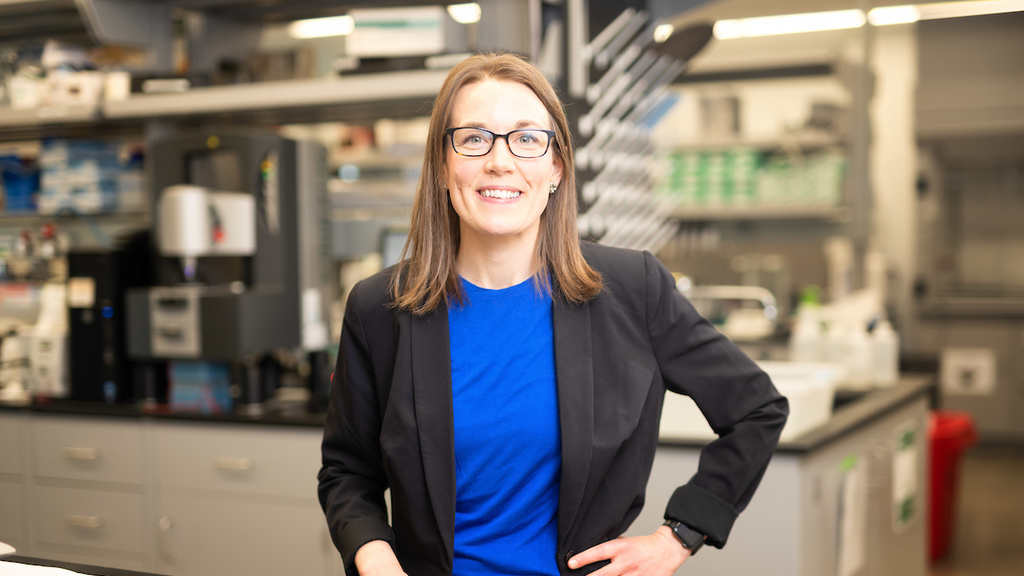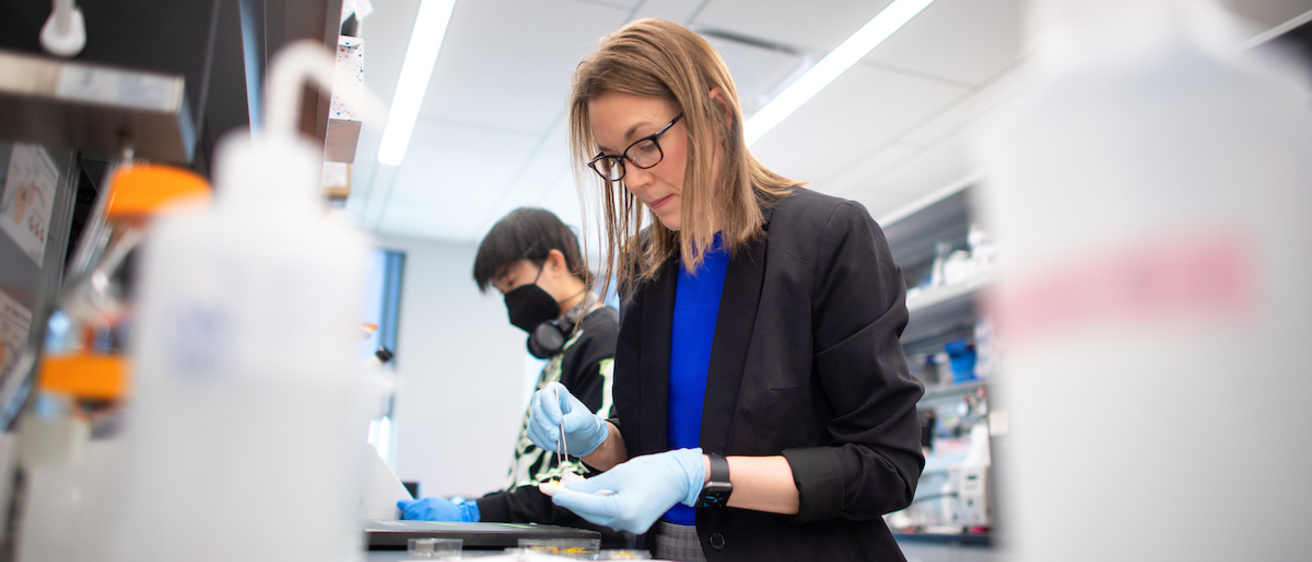The Worthington Lab focuses on understanding interactions between human cells and man-made biomaterials and leveraging these behaviors for specific applications. The team uses two-photon polymerization, a form of high-resolution 3D-printing, to create microstructured support scaffolds for photoreceptor cell replacement therapies and has shown that this technique can also be used for precision drug delivery and for directing the fate of stem cells.
News

Worthington awarded $1.9 million NIH grant to study eye disease
Tuesday, August 13, 2024
A new federal grant will support Kristan Worthington, a University of Iowa associate professor of biomedical engineering, in investigating factors that contribute to age-related macular degeneration, an eye disease that gradually causes central vision loss.

CoE faculty play critical role in multi-institutional biomanufacturing project
Thursday, September 7, 2023
A multidisciplinary team of University of Iowa engineering faculty will contribute to a $20 million, multi-institutional project to boost Iowa’s position as a leader in bioscience and advanced manufacturing.
